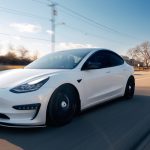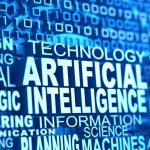Across urban centers, electric vehicles (EVs) have moved from a niche option to a prominent fixture on city streets, prompting discussion about their environmental, social, and economic impacts. As drivers consider EVs for their daily commute, issues like local air quality, public health, and transportation costs have become increasingly important. With incentives and infrastructure expansions, more households now regard EVs as a practical alternative to gasoline-powered vehicles. Communities weighing new transportation policies often reflect on these changes as they chart the way forward.
Earlier reports largely focused on the novelty of EV adoption and major brand launches, emphasizing early-stage policy actions and consumer skepticism about range anxiety. Discussions previously centered on Tesla, Nissan Leaf, and Chevrolet Bolt as leaders, with limited details on broad public health improvements or policy interventions. Since then, updated data highlights a surge in EV sales, advances in charging infrastructure, and expanding government initiatives compared to initial projections. Coverage has shifted from product features to systemic effects, underscoring EVs’ growing integration into urban mobility strategies.
What Drives the Growth of Electric Vehicle Adoption?
EV sales increased by 35 percent worldwide in 2023, with the U.S. recording a rise of over 40 percent. Several factors contribute to this surge: government policies encouraging EV purchase, rising social awareness of air quality, and the desire for cost savings on fuel and maintenance. Current models, including Tesla Model Y, Ford Mustang Mach-E, and Hyundai Ioniq 5, attract diverse segments of consumers. Crucially, broadening public and private investments in fast-charging infrastructure are making ownership more accessible.
How Do Electric Vehicles Impact Urban Environments?
The deployment of EVs yields measurable reductions in tailpipe pollutants such as nitrogen dioxide and particulate matter in densely populated areas. Residents in cities with higher EV penetration benefit from cleaner air and fewer pollution-related health concerns. Energy efficiency data shows that while diesel and gasoline vehicles waste a significant portion of fuel as heat, most of the energy in an EV is directed to moving the car. As explained by experts,
“Electric vehicles use over 75 percent of their energy for propulsion, compared to as low as 12 percent for traditional vehicles.”
Even when powered through electricity from fossil fuels, modern EVs often produce lower carbon emissions per mile than typical gas-powered vehicles.
What Challenges Do Electric Vehicles Still Face?
Concerns about the environmental cost of battery production remain relevant, as manufacturing an EV battery can emit between 2,400 and 16,000 kg of CO₂ depending on production variables. In comparison, the average internal combustion car emits about 43,500 kg CO₂ over its lifetime. Some EV owners cite higher insurance premiums and continued range anxiety as potential barriers, despite the growth of more than 200,000 public charging ports in the U.S. Policies at federal, state, and municipal levels, like the EU phasing out new gas car sales by 2035 or U.S. tax credits for EV buyers, aim to address these obstacles and encourage continued adoption.
The expansion of EV infrastructure is happening unevenly, with rural areas lagging behind cities in both adoption rates and access to reliable charging stations. Nonetheless, property ownership in rural areas can simplify home charger installation, partially mitigating this gap. Meanwhile, urban policy measures—such as electrifying city bus fleets, introducing low-emission zones, and offering business incentives for electric delivery vans—demonstrate a move to shape transportation systems that support healthier, quieter neighborhoods and increased resilience to pollution and climate risks.
Ongoing debates focus on the sustainability of battery supply chains, the importance of robust recycling systems, and equitable access to new infrastructure across urban and rural divides. Data consistently shows that widespread adoption of electric vehicles reduces aggregate transportation emissions, supports cleaner air, and helps cities achieve their climate resilience goals. For decision-makers and consumers alike, examining operational costs, regional infrastructure availability, and environmental trade-offs is key for informed vehicle choices. As the EV landscape matures, ongoing monitoring of public health data, life cycle emissions, and evolving urban policy will help identify where sustained gains and risks may arise. Those interested in a more sustainable commute should factor in total ownership costs, available brand options, and the energy mix of their local grid when evaluating EV adoption.










